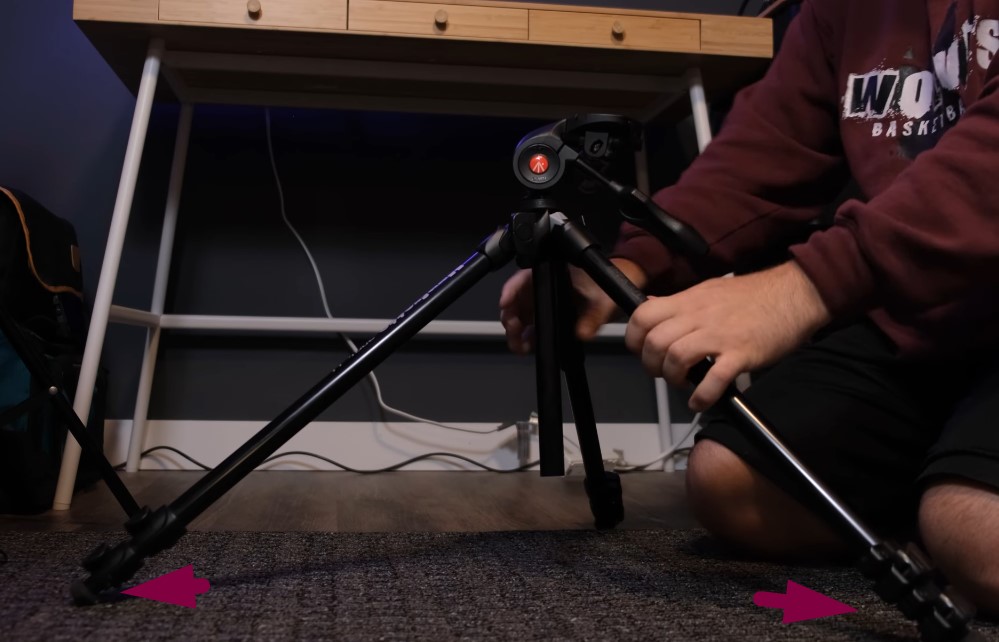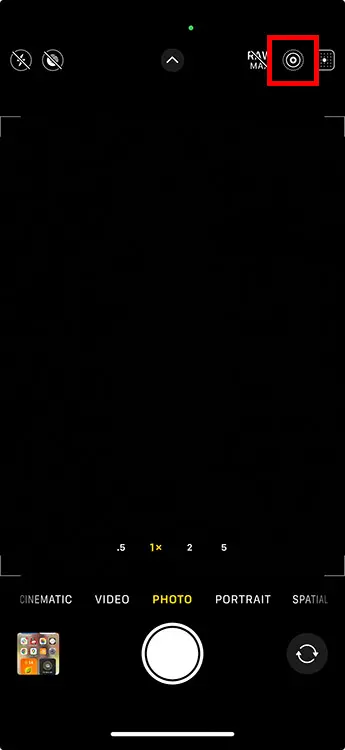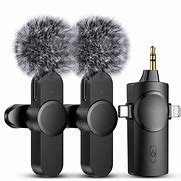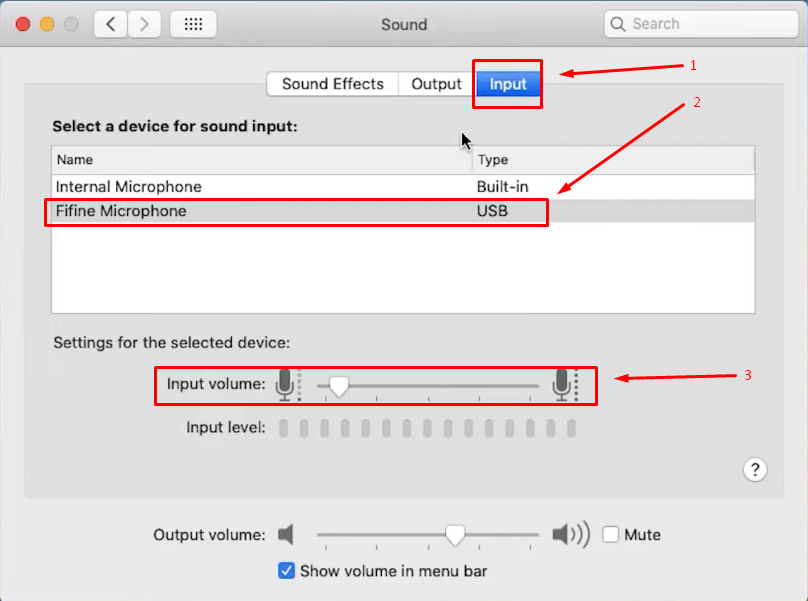Capturing crystal-clear audio is just as important as recording crisp video. Whether you’re a budding YouTuber, an aspiring filmmaker, or simply looking to elevate your home videos, an external microphone can dramatically improve the sound quality captured by your camera. With so many options on the market, we understand that choosing the right microphone can be daunting. That’s why we’ve compiled a list of the best external microphones for cameras, ensuring your productions are not just seen, but heard with the same level of professionalism. Let’s delve into the world of superior sound to find your perfect audio match!
Selecting the best external microphone for a camera involves considering several key criteria to ensure high-quality audio capture to accompany your visual content. Here’s a quick rundown of what to look for:
- Compatibility: The microphone should be compatible with your camera model and connect seamlessly via the camera’s available ports (e.g., 3.5mm audio jack, USB, or hot shoe).
- Sound Quality: It should have a high signal-to-noise ratio to record clean, clear sound with minimal hiss or background noise.
- Pickup Pattern: Depending on your recording needs, you might want a mic with a cardioid pattern (captures sound in front) for focused recording, or omnidirectional for a more environment-inclusive sound.
- Durability: A robust construction that can endure the rigors of outdoor shooting and potentially rough handling.
- Size and Portability: It should be lightweight and compact, making it easy to transport without adding significant weight to your kit.
- Power Source: Consider microphones with in-built power supplies (like batteries) if your camera doesn’t supply power through its mic input.
- Extra Features: Look for additional benefits such as shock mounts to reduce handling noise, wind protection for outdoor recording, and on-device controls for adjusting levels on the fly.
Any microphone that scores well against these criteria is bound to deliver a superior audio recording experience when used with your camera. Now, let’s dive into the top picks that embody these attributes.
| Specification | Shure MV88+ Video Kit | Rode VideoMic Pro+ | Sennheiser MKE 400 Shotgun Microphone | Audio-Technica AT875R | Deity V-Mic D3 Pro |
|---|---|---|---|---|---|
| Price (approx. as of early 2023) | $249 | $299 | $199.95 | $169 | $199 |
| Type of Microphone | Condenser | Condenser Shotgun | Supercardioid Shotgun | Line + Gradient Shotgun | Supercardioid Shotgun |
| Compatibility | iOS, Android, PC, Mac | Cameras with 3.5mm microphone jack | Cameras and mobile devices with 3.5mm jack | Cameras with XLR input | Cameras with 3.5mm jack |
| Key Features | Digital stereo condenser, Manfrotto PIXI Mini Tripod, phone clamp, shoe-mount mic clip | Rycote Lyre shock-mount, two-stage high pass filter, safety channel | Rugged all-metal housing, shock-mounted capsule, low-cut filter | Phantom powered, lightweight design, low-profile | Smart 3.5mm TRRS connector, gain adjustment knob, low noise circuitry |
| Power Requirement | Powered by the connected device | Rechargeable LB-1 battery, AA batteries | AAA battery | Phantom power (11-52V) | Rechargeable via USB-C |
| Connectivity | USB, Lightning, 3.5mm jack (with included cables and adapters) | 3.5mm TRS output | 3.5mm TRS | XLR | 3.5mm TRS with smart adapting |
| Weight | Not listed (kit includes multiple components) | 122g without battery | 93g with battery | 80g | 198g with battery |
When choosing a mic, consider what’s most important for your needs: Is it versatility, audio quality, durability, ease of use, or battery life? Your choice will depend on your specific recording scenarios and preferences.
Shure MV88+ Video Kit
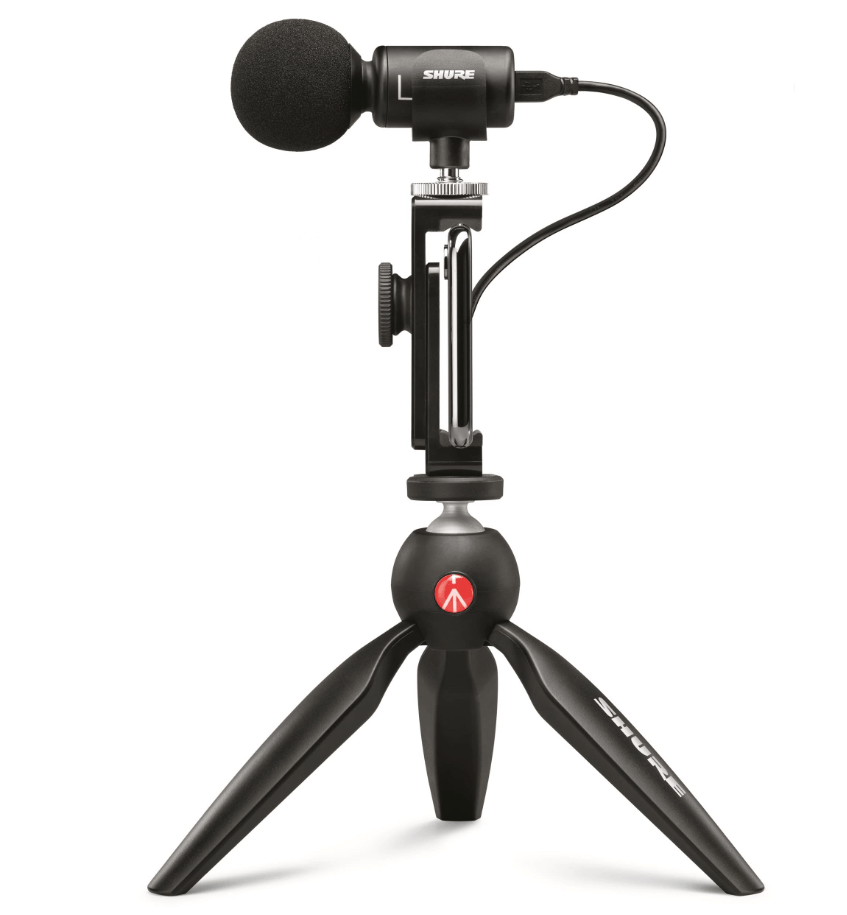
The Shure MV88+ Video Kit is a remarkable blend of portability and high-quality audio capture, standing out as a versatile tool for content creators, journalists, and vloggers alike. This isn’t just a microphone; it’s a full-featured kit aimed at enhancing your audio/visual storytelling. The microphone itself boasts a striking audio clarity that’s bound to enhance the professionalism of your video content.
In my hands-on experience with the MV88+, I was immediately impressed with its sleek design and build quality. Its ease of use is a boon for those who may be intimidated by more complex audio setups. The inclusion of multiple pickup patterns via the ShurePlus MOTIV app extends its versatility, allowing for adjustments on the fly to suit your recording environment. Whether you’re conducting a sit-down interview or capturing the ambient sounds of a bustling city street, the MV88+ doesn’t disappoint.
Specs
- Microphone Type: Condenser
- Polar Patterns: Adjustable (includes cardioid, bidirectional)
- Connectivity: Lightning Connector, USB-C (with included cables)
- Frequency Response: 20 Hz to 20 kHz
- MFi Certified: Yes, compatible with iOS devices
- Software: ShurePlus MOTIV Mobile Recording App
Pros:
- Exceptional audio quality for its size.
- Highly versatile with adjustable recording patterns.
- Easy to set up and use, which is perfect for on-the-go recording.
- Robust construction and thoughtful design elements, like the included phone clamp and shoe-mount mic clip.
Cons:
- Reliant on proprietary apps for full functionality, which might not appeal to all users.
- Somewhat pricey compared to entry-level options, potentially deterring budget-conscious buyers.
- The requirement for Lightning or USB-C connectivity limits compatibility with some devices.
Price
The Shure MV88+ Video Kit finds itself on the higher end of the spectrum when considering external microphones for cameras, typically priced around $249. While this can feel steep for newcomers to the world of external microphones, the comprehensive feature set justifies the investment, particularly for those serious about their audio quality.
In conclusion, if your quest is for sterling audio fidelity in a compact, user-friendly package, the Shure MV88+ Video Kit could very well be the best external microphone for your camera setup. Its price point reflects its premium status, but so does its performance—making it a sound investment for creators and professionals needing reliability and top-notch sound without lugging around heavy gear.
Rode VideoMic Pro+

The Rode VideoMic Pro+ is a formidable contender in the external microphone market, known for its usability and performance. After using this mic on several video projects, I’ve found it to be one of the most reliable on-camera microphones available. The audio quality is remarkably clear and full-bodied, instantly elevating the production value of any video project.
One of the standout features of the VideoMic Pro+ is its auto power function. It’s a game-changer—simply turn your camera on or off, and the mic follows suit. This function not only saves battery but also avoids the frustration of missing audio because you forgot to turn on the mic. Another impressive aspect is the quality of the shock mount. It does an excellent job of minimizing handling noise, which is crucial for run-and-gun situations.
In terms of build quality, the Rode VideoMic Pro+ feels robust and durable without being overly bulky. It conveniently attaches to the camera’s hot shoe mount and connects via a 3.5mm plug, which is a standard for compatibility with most cameras.
Specs:
- Acoustic Principle: Line Gradient
- Frequency Range: 20Hz – 20kHz (selected HPF @75Hz/150Hz)
- Output: 3.5mm stereo mini-jack (dual mono)
- Battery Life: Up to 100 hours
- Active Electronics: JFET impedance converter with bipolar output buffer, 2-stage gain control, high-pass filter, and high-frequency boost
Pros:
- Superior audio quality that captures the depth and subtlety of the soundscape
- Auto power on/off seamlessly integrates with camera usage
- Excellent shock mount that drastically reduces handling noises
- Good battery life with the convenience of USB charging
Cons:
- The price might be on the higher end for hobbyists or those on a tight budget
- It can be a bit weighty on top of a smaller camera, potentially unbalancing the setup
Price:
The Rode VideoMic Pro+ sits at the mid to higher range of the on-camera microphone market. The saying “you get what you pay for” holds true with this mic – the investment reflects in the superior audio and build quality. The exact price can fluctuate based on sales and vendor, but generally, you’re looking at the upper hundred dollar range. Although it may be a bit steep for some, for professionals or serious videographers, the investment is well justified.
Overall, the Rode VideoMic Pro+ stands out for its thoughtful design geared towards the practical needs of videographers. It strikes an excellent balance between functionality and quality, making it a solid investment for both pro-level users and amateurs interested in significantly stepping up their audio game.
Sennheiser MKE 400 Shotgun Microphone

The Sennheiser MKE 400 is a compact shotgun microphone that immediately strikes a chord with its sleek and unassuming design. Tailored for camera users who demand quality audio without lugging around cumbersome equipment, this microphone impresses right out of the gate. Attaching it to my camera was a breeze, and its lightweight construction meant I could shoot all day without it becoming a burden.
When I first tested the MKE 400, it became clear that Sennheiser’s commitment to audio quality was not just marketing fluff. The microphone excelled in outdoor environments, cutting through ambient noise to deliver a focused audio capture of the subject I was recording. Its directional audio pick-up is superb for vloggers, indie filmmakers, and documentarians who operate in unpredictable audio environments.
Specs:
- Pickup Pattern: Supercardioid
- Frequency Response: 50 Hz to 20 kHz
- Sensitivity: -42 dBV/Pa
- Max SPL: 132 dB
- Connector: 3.5mm TRS jack
- Power: 2x AAA batteries
- Battery Life: up to 300 hours
- Dimensions: 5.12 x 0.83 x 2.44 inches
- Weight: 3.28 oz (without battery)
Pros:
- The supercardioid pattern is exceptional for pinpointing audio and rejecting side noise.
- Its compact and durable design makes it ideal for on-the-go shooting.
- The long battery life is a godsend, especially for extended shooting schedules.
- The inclusion of an integrated shock mount reduces handling noise effectively.
- Easy to use with a simple on/off switch, which is a benefit for those not wanting to fiddle with settings.
Cons:
- It might not match the richness of larger, more professional shotgun mics.
- Lacks some of the advanced features like digital signal processing or on-device gain control found on pricier models.
Price:
The MKE 400 is reasonably priced, especially when you consider its robust build and audio quality. It falls into a mid-tier price range which, in my opinion, makes it a great value for creators who need a reliable, good-sounding mic without breaking the bank. Prices fluctuate, but you can generally find it for under $200.
Personal Opinion:
In my hands-on experience, the Sennheiser MKE 400 offers a fine balance between functionality and affordability. Its ease of use is a standout feature—just attach it, turn it on, and you’re ready to record. For those who dread wading through complex menus or setups, the MKE 400’s straightforward nature is a breath of fresh air.
While it might not pack the punch of high-end shotgun mics, the audio clarity and directional capabilities are impressive for its size. The MKE 400 holds its ground as a formidable tool for elevating your camera’s audio, perfect for content creators on the move who need to capture clear sound without any fuss.
Title: Best External Microphone for Camera
Subtitle: In-Depth Review for the Audio-Technica AT875R Line/Gradient Shotgun Microphone
Audio-Technica AT875R Line/Gradient Shotgun Microphone

The Audio-Technica AT875R is a compact shotgun microphone designed for video production and broadcast audio acquisition. It is a workhorse in the industry, praised for its focused sound pickup that excels in isolating the audio from the subject while rejecting side noise. The AT875R’s condenser element provides a smooth, natural sound profile that is just what you need if you’re looking to step up from a built-in camera microphone or a cheaper option.
From the moment I got my hands on the AT875R, I was impressed by its sturdy build despite its notably short length, which makes it incredibly unobtrusive when mounted on a camera. Audio-Technica has managed to pack a hefty punch in terms of audio quality into this small form factor. The microphone exhibits a successful trade-off between directional focus and flexibility; it captures your subject with clarity, whether they’re speaking softly or acting out a raucous scene.
Specs:
- Element: Fixed-charge back plate, permanently polarized condenser
- Polar Pattern: Line + gradient
- Frequency Response: 90-20,000 Hz
- Open Circuit Sensitivity: -30 dB (31.6 mV) re 1V at 1 Pa
- Impedance: 100 ohms
- Weight: 80g (2.8 oz)
- Length: 175.0 mm (6.89 inches)
- Output Connector: Integral 3-pin XLRM-type
Pros:
- Outstanding directional sensitivity perfect for interview setups or film work where audio precision is key.
- The sound quality offers a significant upgrade from entry-level microphones, providing a professional sheen to your audio.
- Its lightweight and compact form factor is a blessing for run-and-gun videographers and reducing camera shake.
- Built like a tank, yet the use of metal materials doesn’t add unnecessary weight.
Cons:
- The phantom power requirement means it’s not plug-and-play with all cameras; you’ll need a device capable of delivering 11-52V DC.
- Low-end response isn’t earth-shattering, which might be noticed in richer or deeper tones.
- Does not include any additional accessories like a windshield, which are pretty much essential for outdoor shooting.
Price:
The AT875R comes in the mid-range price bracket for shotgun mics, which feels like a sweet spot given its performance. While it doesn’t have the bells and whistles of some higher-end models, it also doesn’t carry their price tag, which makes it relatively accessible for budding filmmakers and content creators. If I recall correctly, the price hovered around $169 at my last check, which is quite a deal for what it brings to the table.
In summary, the Audio-Technica AT875R is a superb choice for anyone looking to improve their audio game without breaking the bank. This little powerhouse has been a reliable companion on many of my video shoots, and it’s rarely missed a beat. It’s best for intermediate users who have a basic understanding of audio equipment and can handle the phantom power requirements. I wholeheartedly recommend the AT875R to anyone looking to make a serious improvement to their audio quality with a trusted brand like Audio-Technica.
Deity V-Mic D3 Pro

The Deity V-Mic D3 Pro is a standout in the crowded market of external microphones for cameras, known for its impressive sound quality, user-friendly features, and a robust design that appeals to both amateur filmmakers and professional videographers. My experience with the D3 Pro has been exceptional, as it manages to capture clear and crisp audio, whether I’m shooting indoors or braving the elements outside.
The D3 Pro showcases a thoughtful design with its stepless gain knob, which I personally find to be a godsend. It allows for precise control over audio levels, reducing the need for post-production tweaking. The microphone’s auto on/off function is another feature I appreciate; it powers up with the camera, so there’s one less thing to worry about during a shoot.
What sets the Deity D3 Pro apart for me is its ability to adapt across different devices. I’ve used it seamlessly with cameras, smartphones, and even tablets, which speaks volumes about its versatility for creators who work across various platforms.
Specs:
- Polar Pattern: Super-Cardioid
- Frequency Range: 50Hz to 20kHz
- Signal to Noise Ratio: 84dB
- Battery Life: Up to 51 hours
- Output: 3.5mm TRRS (for cameras, mobile devices and computers)
- Low-Cut Filters: 75Hz and 150Hz
- Build Material: Aluminum
- Weight: 198g
Pros:
- The audio quality is exceptional for the price range; it captures natural-sounding dialogue and reduces ambient noise effectively with its super-cardioid pattern.
- Long-lasting battery life means less stress on long shoots.
- I find the shock mount to be top-notch, effectively suppressing handling noise when moving around.
Cons:
- It’s a tad heavier than some competitors, which might be a concern for run-and-gun videographers.
- While the build quality is excellent, I’ve had concerns about the durability of the included cables over extensive use.
- The stepless gain knob, while flexible, can take some time to get used to, especially if you’re moving from a microphone with preset gain levels.
Price:
The Deity V-Mic D3 Pro typically retails for around $199. While it’s not the cheapest microphone on the market, in my opinion, it offers significant value for the cost. The clarity of the sound, combined with the build and features, make it a competitive product for both enthusiasts and professionals looking to elevate their audio game without breaking the bank.
In conclusion, if audio quality and versatility are your top priorities and you’re willing to invest a bit more for premium features, the Deity V-Mic D3 Pro should definitely be on your shortlist.
Conclusion:
In conclusion, choosing the best external microphone for your camera greatly enhances audio quality, bringing clarity and professionalism to your projects. Whether it’s for interviews, vlogging, or filmmaking, there’s a microphone tailored to your needs. Remember, consider the mic’s compatibility with your camera, the type of recording you’ll be doing, and your budget. With the options we’ve explored, from shotgun to lavalier microphones, you’re now equipped to make an informed decision that will take your audio experience to the next level.
While traditional external microphones enhance audio recording quality, a wireless lavalier microphone grants you unmatched freedom and flexibility, especially helpful when filming interviews or vlog-style content. Its compact design and reliable wireless connection make it an essential audio accessory for your filming setup in 2024.
FAQs:
- What should I consider when choosing an external microphone for my camera?
Consider the recording environment, compatibility with your camera, the type of content you’re producing, the mic’s directional pattern, and your budget. - Can I use these external microphones with any camera?
Most external microphones can be used with a wide range of cameras, but it’s vital to check for compatibility with your specific camera model, especially the microphone input jack. - Is a wireless microphone better than a wired one?
It depends on your needs. Wireless microphones offer more mobility and are great for vloggers and interviews, while wired microphones generally provide more reliable sound quality and don’t require batteries or charging.

































.png)


